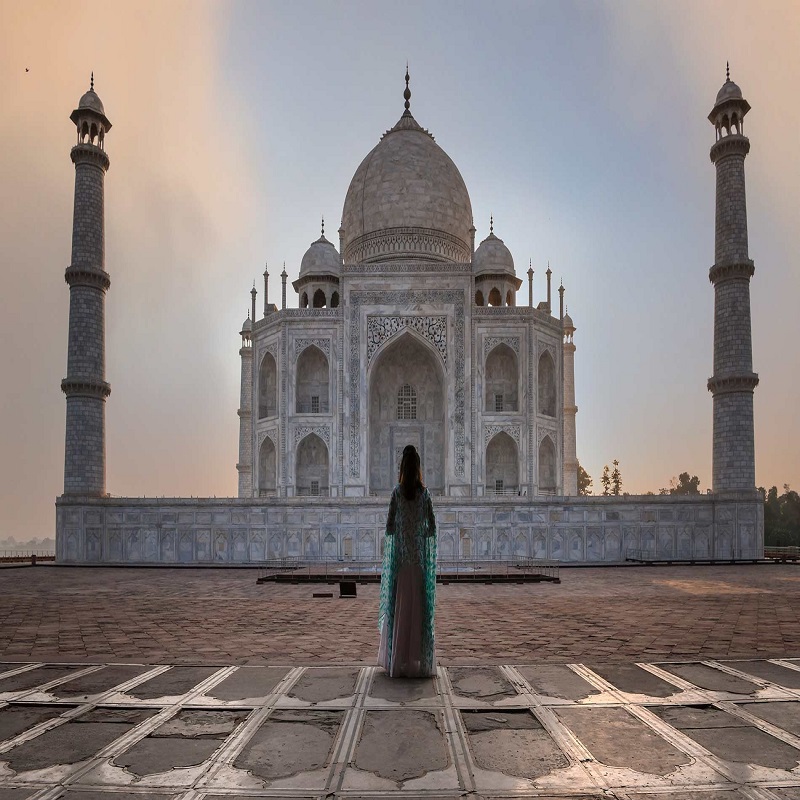
Introduction
If you’re looking to experience the very essence of India in one journey, the Golden Triangle Tour is the perfect choice. Covering the three historic cities of Delhi, Agra, and Jaipur, this route offers a blend of cultural heritage, architectural wonders, vibrant markets, and rich traditions. Known as the most popular tourist circuit in India, the Golden Triangle provides travelers with a comprehensive introduction to North India’s history and diversity.
This blog will take you through the significance of the Golden Triangle, how to plan your trip, key highlights of each city, insider travel tips, and why it remains the most recommended itinerary for first-time and seasoned travelers alike.
Why the Golden Triangle is Special
The Golden Triangle isn’t just a catchy name—it represents India’s cultural and historical diversity within a manageable travel route of about 720 km. Each city on the circuit has a unique identity:
- Delhi: A capital that blends Mughal monuments, colonial architecture, and modern city life.
- Agra: Home to the world’s most famous monument of love, the Taj Mahal, and other Mughal masterpieces.
- Jaipur: The “Pink City” of Rajasthan, where royal palaces, forts, and colorful bazaars tell tales of Rajput glory.
Together, they create a balanced introduction to India’s heritage, making it a favorite for tourists from around the globe.
Best Time to Visit
The ideal time for the Golden Triangle Tour is from October to March, when the weather is cooler and sightseeing is comfortable. Summers (April–June) can be scorching, especially in Agra and Jaipur, while monsoons (July–September) bring heavy rains but also greener landscapes.
Duration of the Tour
The Golden Triangle can be tailored to different travel schedules:
- 3 Days: Quick highlights of Delhi, Agra, and Jaipur.
- 4–5 Days: A balanced itinerary with time for relaxed sightseeing.
- 7+ Days: Allows deeper exploration, side trips (e.g., Ranthambore for tigers, Varanasi for spirituality, Udaipur for lakes).
City-Wise Guide
1. Delhi – The Gateway to India
Delhi serves as the starting point for most travelers. It is a city of contrasts—Old Delhi, with its bustling bazaars and Mughal-era monuments, versus New Delhi, with its grand boulevards and colonial architecture.
Key Attractions:
- Red Fort – A UNESCO World Heritage Site and former Mughal seat of power.
- Qutub Minar – The world’s tallest brick minaret.
- Humayun’s Tomb – Precursor to the Taj Mahal in design and grandeur.
- India Gate & Rashtrapati Bhavan – Icons of New Delhi’s colonial heritage.
- Chandni Chowk – A chaotic yet colorful market, best explored in a rickshaw.
Travel Tip: Start sightseeing early in the day to avoid traffic and crowds, especially around Old Delhi.
2. Agra – The City of the Taj
Agra is synonymous with the Taj Mahal, but the city has far more to offer. As the capital of the Mughal Empire for much of its history, Agra is dotted with architectural marvels.
Key Attractions:
- Taj Mahal – Built by Emperor Shah Jahan in memory of his wife Mumtaz Mahal, this marble wonder is best viewed at sunrise.
- Agra Fort – A powerful red sandstone fort that combines military might with Mughal elegance.
- Itmad-ud-Daulah’s Tomb – Often called the “Baby Taj,” a jewel of intricate marble work.
- Mehtab Bagh – A garden across the Yamuna offering stunning sunset views of the Taj Mahal.
Travel Tip: Taj Mahal is closed on Fridays. Buy tickets online in advance to skip long queues.
3. Jaipur – The Pink City of Rajasthan
Jaipur completes the triangle with its royal palaces, imposing forts, and vibrant markets. Known as the Pink City because of its rose-colored buildings, it reflects the grandeur of Rajput kings.
Key Attractions:
- Amber Fort – A hilltop fortress known for its artistic blend of Hindu and Mughal architecture.
- City Palace – Residence of the royal family, featuring museums and courtyards.
- Hawa Mahal (Palace of Winds) – A five-story façade built for royal women to observe street life discreetly.
- Jantar Mantar – An astronomical observatory and UNESCO World Heritage Site.
- Local Bazaars – Famous for jewelry, textiles, handicrafts, and blue pottery.
Travel Tip: Take a guided heritage walk in the old city to fully appreciate Jaipur’s architecture and craftsmanship.
Getting Around the Golden Triangle
- By Car: Private car with driver is the most popular option for flexibility and comfort. Distances: Delhi–Agra (3–4 hours), Agra–Jaipur (4–5 hours), Jaipur–Delhi (5–6 hours).
- By Train: Gatimaan Express and Shatabdi Express connect Delhi and Agra efficiently. Jaipur is also well connected by train.
- By Air: Delhi and Jaipur have airports, but road/rail is more practical for Agra.
Practical Travel Tips
- Entry Fees: Expect different rates for foreign and domestic visitors. Always carry some cash, though cards are increasingly accepted.
- Guides: Licensed guides enhance the experience, especially at historical sites. Avoid touts.
- Clothing: Dress modestly, especially when visiting religious sites. Comfortable footwear is essential.
- Safety: The Golden Triangle is tourist-friendly, but remain cautious about pickpockets in crowded areas.
- Food & Water: Stick to bottled water. Try local cuisines—Delhi’s street food, Agra’s petha, Jaipur’s dal baati churma.
Why Choose the Golden Triangle for Your First India Trip
- Compact yet Diverse: Covers multiple eras—Mughal, Rajput, and colonial—in one journey.
- World-Class Monuments: Includes three UNESCO World Heritage Sites and countless architectural gems.
- Easy Logistics: Well-developed road, rail, and hospitality infrastructure.
- Cultural Immersion: From bustling Delhi streets to Agra’s Mughal romance and Jaipur’s royal heritage.
Suggested 5-Day Itinerary
- Day 1: Arrival in Delhi; explore Qutub Minar, Humayun’s Tomb, India Gate.
- Day 2: Old Delhi tour (Red Fort, Jama Masjid, Chandni Chowk); evening drive to Agra.
- Day 3: Sunrise at Taj Mahal, visit Agra Fort and Mehtab Bagh; drive to Jaipur en route Fatehpur Sikri.
- Day 4: Jaipur sightseeing – Amber Fort, City Palace, Jantar Mantar, Hawa Mahal.
- Day 5: Explore markets and local crafts; return to Delhi for departure.
Conclusion The golden triangle india tourism remains the most recommended travel route for a reason. It offers a balanced introduction to India’s diverse heritage, from Mughal splendor and Rajput royalty to colonial grandeur and modern vibrancy. Whether you have three days or a week, the Golden Triangle guarantees a journey full of history, culture, and unforgettable experiences.





